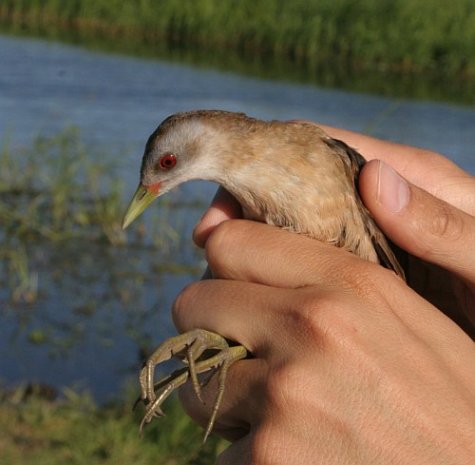Birder's diary - before Midsummer
Birder Margus Ots, Linnuvaatleja.ee
Translation: Liis
June 21st
After several days I at last got away on a trip again. I had strained my back and simply could not stand up. Fortunately the weather was rather poor (rainy or windy) meanwhile and I felt no particular urge to get out. But now finally a calm and clear night seemed to be coming and I headed for Virumaa at once. Possible great grey owl (Strix nebulosa) locations had to be checked. This rare creature has been seen only twice in Estonia this year – in February one bird was run over by a car near Kohtla-Järve and in June another bird strayed into view of the East-Virumaa bear watchers’ web camera. I have seen this species in Estonia 3 times and each time it has been sitting on a tree stump looking for prey in a felling area. Now I combed through the felling lots again in a large area during the night but this time I didn’t come across the „Great Grey“.
Among other birds the activity of the woodcocks (Scolopax rusticola) was notable. They were flying around everywhere in felling areas and at forest verges, altogether certainly more than 50 birds. The number of corn crakes (Crex crex) in the felling areas was somewhat surprising. This species does live on felling lots in areas with large forests, but nearly 25 birds were „craking“ on already quite overgrown fellings with not much open space. Asking more knowledgeable people however made it clear that some corn crakes actually live in such comparatively dense thickets. Wiser once again. The most exciting creature that I met during the night was a capercaillie (Tetrao urogallus) – a cock stood in the middle of the road in early morning and refused to move. Unfortunately it was still quite dark and photographing by the car headlights did not succeed.
NB! The Summer days of the Estonian Ornithological society (EOÜ) take place already on the coming weekend (June 30 – July 1) in Tartumaa in Rannu. Detailed information on the EOÜ web page. The last chance to register is on Sunday, June 24th.
June 22nd
It has been said earlier already that in the surroundings of Tartu singing white-spotted bluethroats (Luscinia svecica cyanecula) have been heard in three areas. This bluethroat with the white breast spot, mainly nesting in water meadow willow thickets has become so rare that it is not even found every year. The red-spotted bluethroat (Luscinia svecica svecica) is however a frequent visitor on migration. Since spring a white-spotted bluethroat pair has been observed at Raadi in Tartu but a week ago proper photos were made of one bird and it turned out that we had to do with a bird with a red breast spot. Today we went to investigate the matter more thoroughly, we hoped to get hold of this strange specimen. Surprisingly as first bird a white-spotted bluethroat male came into the net, after that we also caught the male with the red breast spot. Females were not seen at all in the area, and the question at once came up whether earlier too two different male birds had been observed (not a pair)? Most questionable of all however was what subspecies the birds belonged to. According to recent studies there are individuals with red breast spots among the whites-spotted bluethroats too, which makes the determination of a subspecies very complicated. Today’s birds were carefully photographed (ringed and of course at once set free too) and light can soon hopefully be brought in the issue. Sometime soon the identification problem will be discussed in more detail with photos.
The first little crake to be ringed in Estonia (22.06.2012 Aardla polder)
This year we will try to have some more thorough bird counts in the Aardla polder near Tartu. Although there was comparatively little water in the area in spring, and waterfowl did not stop in very great numbers on migration the nesting period has brought many surprises. Over the years many rails (Rallidae family birds) have for instance been heard in the area. Altogether 17 individuals (14 females and 3 males) of little crake (Porzana parva) that is a relatively rare bird in Estonia have been seen in the Ropka-Ihaste meadow and the Aardla polder. Today we managed to identify 3 females and 1 male in one place. We also managed to ring one female bird. If I remember rightly this is the first little crake to be ringed in Estonia.









